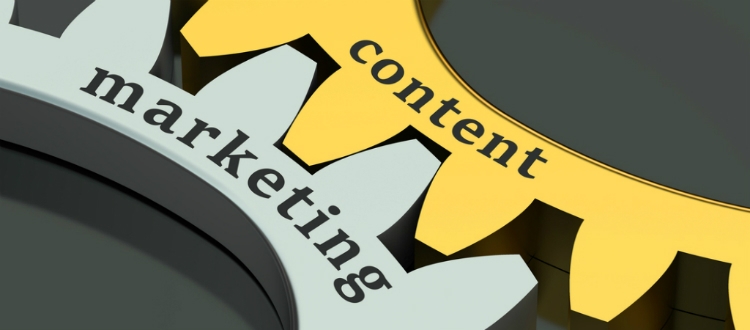Social media marketing is one of the essentials of digital marketing that enables businesses to increase their visibility and drive more traffic to their website.
Research suggests that more than 90% of social media users use their social media profiles to know more about a brand and communicate with them.

Brands that focus on creating an effective social media marketing strategy tend to witness great results in terms of brand recognition and conversions than businesses that do not pay attention to it.
If you haven’t tried a social media marketing strategy for your business yet and are planning to give it a go this year, you have come to the right place.
We have created a comprehensive guide to creating an effective social media marketing strategy that can help you get extraordinary results in a short time.
What is Social Media Marketing?
Social media marketing, as its name suggests, is a process of creating brand awareness using prominent social media networks, such as Facebook, Instagram, Twitter, Linkedin, etc.
The process involves creating high-quality content that you can publish on your social media business pages, listening to your followers and engaging them with different customer engagement activities, measuring your progress, and running social media ad campaigns.

Why Social Media Marketing is Crucial for the Success of Your Online Business?
Increases Brand Awareness

The biggest perk of creating a comprehensive social media marketing strategy is that it makes your brand visible to your target audience.
Because people spend plenty of their time on social networking channels, an all-inclusive social media strategy provides an opportunity for online businesses to increase their brand awareness and chances of getting more traffic to your website through social media networking platforms.
It’s Affordable
Unlike other paid advertising options, social media advertising is cost-effective and more manageable. We’d suggest you start small to increase your chances of getting a better ROI on your initial investment.
Increases Customer Engagement
Social media networks allow businesses to maintain direct communication with their customers. Present-day customers admire brands that value their opinions and contribution.
Creating a social media marketing strategy enables you to maintain contact with your potential customers, which isn’t possible with any other form of digital marketing.
Improves Brand Loyalty
Having social media pages enables your customers to find and connect with you. When you give your customers a chance to share their feedback and opinions, you get customer loyalty in return.
Improves Customer Satisfaction
Happy customers = more sales = more ROI
Pretty simple, isn’t it?
Also, those satisfied customers will become your brand advocates who’ll spread positivity about your brand wherever they go.
Improves Traffic
By sharing your content on social media, you enable your potential customers to visit your website. That goes without saying that when more people visit your website, you get an opportunity to convert them and increase your sales.
Better SEO Rankings
Having a stable social media presence with a decent number of followers is a proven way to let search engines know that your brand is worthy of their attention.
A Seven-Step Guide to Creating an Effective Social Media Marketing Strategy

Similar to anything else in the corporate world, everything starts with a strategy in the online marketplace.
The process of social media marketing revolves around seven core essentials:
1. Set Goals and Identify Your Key Metrics
What outcomes did you expect from your social media marketing strategy? Some brands use social media marketing to increase brand awareness, while others use social media channels to drive store traffic and sales. Whether you want to use your social media strategy to create a community, build your brand, or generate customer engagement, make sure you know your goals beforehand so that you can move in the right direction.
Here are a few things you can do to define your social media marketing goals.
- Keep your goals specific and clear
- You should be able to measure the progress of your social media marketing goals
- You must not set goals that are not achievable
- Your social media marketing goals should be in line with your resources
- Set goals that you can achieve in a defined period
- Your social media marketing goals should be in line with your company’s overall selling and marketing objectives
Once you have successfully determined your key objectives, the next step is identifying key metrics to measure the effectiveness of your goals.
Do not overcomplicate things. Simply stick to these four metrics to measure the progress of your social media strategies.
- Reach
- Referral traffic
- Business growth and customer engagement
- conversions
Here, it is critical to understand that you don’t have to use all of the above-listed metrics to track the success of your strategy. You must only use those key metrics that are aligned with your overall social media marketing strategy.
2. Know Your Target Audience

Failing to choose the right social media marketing platform can severely impact your brand’s visibility. Choosing the right social media platform is key to a successful social media strategy.
Choosing the right platform mainly depends on how well you know your target audience. For this, you have to find out the channels your target audience use. In addition to that, you should also determine the amount of time your potential customers spend on those channels.
Remember, the more you know about your target audience, the better you would be able to build a successful social media strategy to reach them.
So how do you know about your target audience?
Create marketing personas of your ideal buyers. You can start your research with the big social media platforms, such as Facebook and Linkedin. Also, use the search functions to determine how engagement levels and activity works.
Last but not least, try to cultivate a voice that your target audience prefers.
3. Choose Platforms
The next step is choosing the right social media marketing channels. Not all social media marketing platforms are created alike. As mentioned earlier, the most popular social media channels include Facebook, Twitter, Linkedin, Instagram, Snapchat, and Pinterest.
In addition to these, you can also choose upcoming platforms, such as ad Tumblr and Tik Tok, to improve your reach.
The idea is to choose channels you think are also in use by your target audience. In other words, you should choose social networking platforms that best fit your goals and personalized strategy.
Instead of targeting all platforms, only focus on channels that matter to you and your potential customers.
Here are a few things you should consider before choosing the right social media platform for your brand:
Your Audience: Find out a platform where your potential customers spend their time. You can use surveys to research social media user demographics.
Time: How much time can you devote to manage your social media pages? Ideally, you must allocate at least an hour every day.
Resources: Do you have expert personnel and resources to run your social media pages? We’d suggest you hire a social media manager if you’re a newbie. You may, however, consider handling your social media pages on your own if you have experience.
4. Type of Content You Want to Share

One of the most critical social media strategy essentials includes selecting the type of content that will attract your potential customers.
Is your target audience interested in educational or entertaining content? For this, you have to create buyer personas, which will help you identify the right type of content for your needs.
The key is to create good-quality and valuable content that can instantly attract your follower’s attention.
When it comes to social media marketing, the one-size-fits-all approach isn’t valid anymore. You should create personalized content for each platform. From the selection of words to choosing the right type of images and videos, you should ensure that everything on your profile is targeted for the right type of audience.
Create engaging and optimized content that solves your customer’s problems. You can also create long-form informative articles and tutorials that spreads awareness and helps your audience know the real benefits of your products.
Research indicates that video content gets more likes and shares on social media. So, investing in a foolproof video marketing strategy is a good idea.
Social media is an ideal platform where you can encourage people to become your loyal customers. Host contests, announce giveaways, and freebies to involve your potential customers. Your goal is to let your customers know you care.
5. Pick Your Posting Strategy
We have already discussed what you should post on your social media pages to increase engagement and generate ecommerce conversions. Now you must be wondering how often you should post on your social media platforms?
Well, it depends.
In all honesty, it’s not essential that what works for us will also work for you. Many factors affect your sharing frequency, including your reach, target audience, and above all your industry.
The feedback you get from your followers can also help you decide how often you should post on your pages. If people like your content, you can always post more.
There is no hard and fast rule when it comes to resolving the sharing frequency of your content. However, if you’re using Facebook or Instagram, posting once or twice per day would be enough to keep your followers informed.
If you’re using Instagram Stories, you can post up to 8 to 16 stories every week. Twitter users can limit their tweets up to 3 to 10 times a day. Similarly, if your audience is on Linkedin, you can post once or twice per day to keep your audience engaged.
Pinterest users, on the other hand, must not post more than 5 to 10 times per day.
But again, the posting frequency you choose depends on your individual needs and preferences.
6. Leverage the Best Social Media Management Tools

Tools make your life easy. Luckily, there are plenty of social media tools available online that you can use to increase your followers and social media engagement.
Selecting the right social media management tool can be a challenging task. There are hundreds of programs available that finding the best tool can become a nightmare for social media users.
Make sure you find answers to these questions before you choose a social media management software for your business.
- What objectives are you trying to achieve through your social media marketing strategy?
- What made you think that you can improve your performance using a social media marketing tool?
- Which specific social media platforms do you want to target?
- Are you willing to invest your money in paid social media ad campaigns?
- What budget do you have in hand?
The good thing about these tools is that most of them come with a free trial offer. Also, you can have a detailed conversation with the support team to know more about your options.
7. Measure, Monitor, and Optimize
No matter how value-driven and engaging your content is, all of your efforts will go down the drain if it fails to fetch in the desired conversions.
For this, you have to test your social media marketing strategy from time to time to see if it needs any changes. Make sure you carefully analyze your data to optimize your strategy.
How to analyze your performance?
You can easily track your progress based on the key metrics you outlined at the start of your journey. Set a benchmark and measure performance through your stats (average number of shares/clicks/likes/page visits).
Even if you’re getting positive results, remember, running social media platforms is an evolving activity. You have to experiment with different approaches to improve your strategy and get better results.
There you have it – A Seven-Step Guide to Creating an Effective Social Media Marketing Strategy. All of these steps are tried-and-tested, meaning you can implement them right away without even giving a second thought.
Don’t forget to drop your feedback if you get some real-time results by implementing these strategies. We would love to know about your experience.
About the Author

Ricky Hayes is the Co-Founder and Head of Marketing at Debutify – free Shopify theme, helping dropshippers build high-converting stores in minutes. He is a passionate entrepreneur running multiple businesses, marketing agencies and mentoring programs.

